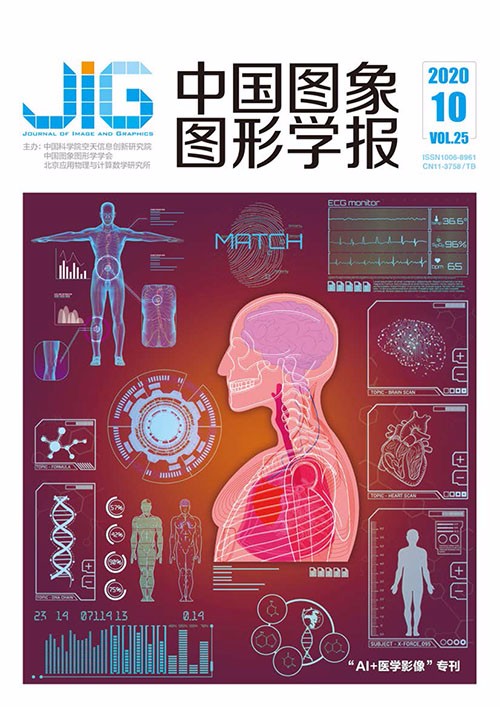
磁共振影像深度学习在精神分裂症诊断中的应用综述
宋佩伦1, 王雅萍1, 耿秀娟2, 张航1, 宋学勤3(1.郑州大学信息工程学院, 郑州 450001;2.香港中文大学大脑与认知研究所, 香港 999077;3.郑州大学第一附属医院精神医学科, 郑州 450001) 摘 要
精神分裂症是一种大脑存在结构和功能异常的严重精神疾病,目前尚无十分有效的诊疗手段。许多研究者尝试采用基于磁共振影像的机器学习方法辅助诊断精神分裂症。深度学习由于其强大的特征表示能力,在医学影像等领域得到了广泛的应用,表现出比传统机器学习方法更优异的性能。目前已有论文对深度学习在医学影像领域内的应用进行了详细的总结和分析,却很少有论文对其在具体某一疾病(例如精神分裂症)诊断中的应用进行系统的梳理和总结。因此,本文主要关注深度学习在基于磁共振影像的精神分裂症诊断中的应用。首先介绍了基于磁共振影像的精神分裂症诊断中常用的几种深度学习模型;其次按照数据的不同模态将相关研究划分为:基于结构磁共振成像的方法、基于功能磁共振成像的方法以及基于多模态数据的方法,并对各类方法的具体应用进行了总结;最后针对目前的研究现状,进一步分析和总结出样本量偏小、样本类别不均衡、模型可解释性低、多模态分析中缺失模态数据以及缺少有效融合策略等,是目前该领域研究中存在的主要问题。多中心及纵向数据分析以及针对不同症状亚型的个体化精准诊断模型的构建,是未来该领域研究发展的趋势。本文系统地总结了深度学习在基于磁共振影像的精神分裂症诊断中的应用,分析了该领域面临的问题和下一步的研究方向,对该领域的研究具有一定的参考和指导意义。
关键词
Survey of deep learning in MRI-based diagnosis of schizophrenia
Song Peilun1, Wang Yaping1, Geng Xiujuan2, Zhang Hang1, Song Xueqin3(1.School of Information Engineering, Zhengzhou University, Zhengzhou 450001, China;2.Brain and Mind Institute, Chinese University of Hong Kong, Hong Kong 999077, China;3.Department of Psychiatry, The First Affiliated Hospital of Zhengzhou University, Zhengzhou 450001, China) Abstract
Schizophrenia is a severe psychiatric disorder with abnormalities in brain structure and function. The early diagnosis and timely intervention can significantly improve the quality of life. However, no effective methods are available for the diagnosis and treatment of schizophrenia yet due to the complex pathology of this disease. Recently, deep learning methods have been widely used in medical imaging and have shown their great feature representation capability. The performance of deep learning methods has been demonstrated to be superior to that of traditional machine-learning methods. Researchers have attempted to use deep learning to assist the diagnosis of schizophrenia on the basis of magnetic resonance imaging (MRI) data. However, few surveys have systematically summarized the application of deep learning in the MRI-based diagnosis of schizophrenia. Therefore, MRI-based deep learning methods for the classification of schizophrenia patients and healthy controls were reviewed in this paper. First, commonly used deep learning models in the field of MRI-based diagnosis of schizophrenia were introduced. These models were classified into five categories: feed-forward neural network, recurrent neural network, convolutional neural network, unsupervised feature-learning models, and other deep models. The basic idea of the model in each category was introduced. Specifically, perceptron and its deeper expanding model, called multilayer perceptron, were briefly introduced in the review of feed-forward neural network. The most famous recurrent neural network model, named long short-term memory, was described. For the convolutional neural network, the common model components were reviewed. Unsupervised feature-learning models were further divided into two subcategories: stacked auto-encoder and deep belief network. The basic components of the model in each subcategory were described. We also reviewed two other deep models that cannot be classified into the categories described above, namely, capsule network and multi-grained cascade forest. Examples of deep learning studies used in the diagnosis of schizophrenia in each category were included to show the effectiveness of these models. Second, the deep learning methods for schizophrenia classification were divided on the basis of the data modality of MRI and reviewed in accordance with the following categories: structural MRI (sMRI)-, functional MRI (fMRI)-, and multimodal-based methods. Papers using MRI-based deep learning models for schizophrenia diagnosis were also summarized in a table. For sMRI-based methods, studies using 2D and 3D models and different methods for solving the requirement of large sample size were discussed. Resting-state fMRI- and task-fMRI-based methods were included in the fMRI-based category. In addition to different methods for solving limited sample size, studies using regional- or voxel-based functional activity features and functional connectivity-based features were introduced in this category. Some multimodal-based methods, which show better performance than most of unimodal-based approaches, were also described. Lastly, on the basis of existing studies, we concluded the main challenges and obstacles in the real application of these models in schizophrenia diagnosis. The first one refers to sample-related problems, including limited sample size and imbalanced sample class distribution. The second one is the lack of interpretability in deep learning models, which is a critical limitation for the application of deep learning models in real clinical condition. The last one is related to problems in multimodality analyses. Missing modality and the lack of effective multimodal feature fusion strategies would be the key problems to be solved. Future research directions lie in multisite and longitudinal data analyses and the construction of personalized precise models for the diagnosis of different subtypes of schizophrenia. Multisite data analyses would lead to a robust model and enable effective evaluation for deep learning models before the translation to clinical applications. Longitudinal data would provide the dynamically developmental patterns of the disease, leading to enhanced model performance. Personalized precise models are urgently needed to improve the accuracy of computer-aided diagnostic systems in consideration of the broad symptoms of schizophrenia and existing biased methods. In summary, this article reviewed the application of MRI-based deep learning models in the diagnosis of schizophrenia and provided guidance for future studies in this field.
Keywords
|



 中国图象图形学报 │ 京ICP备05080539号-4 │ 本系统由
中国图象图形学报 │ 京ICP备05080539号-4 │ 本系统由